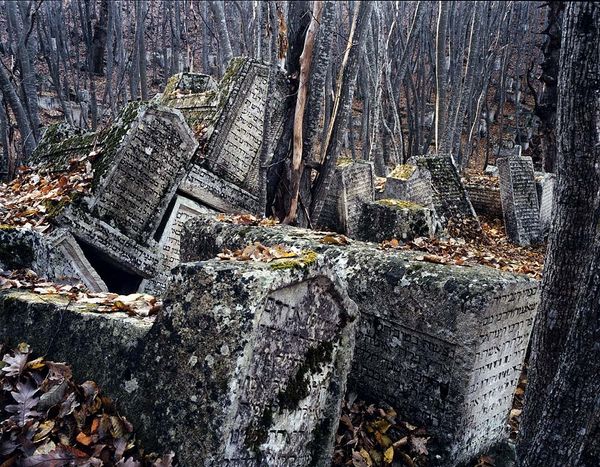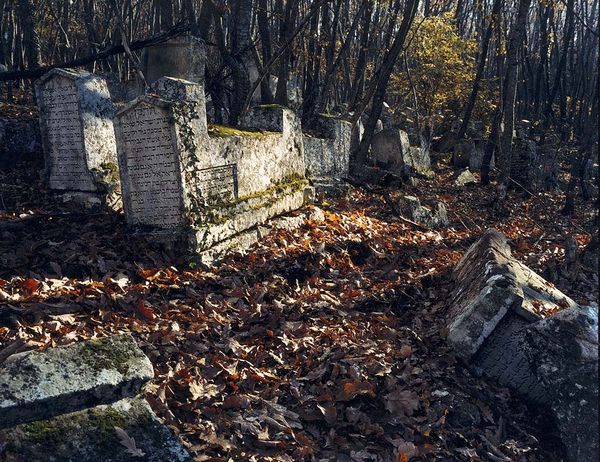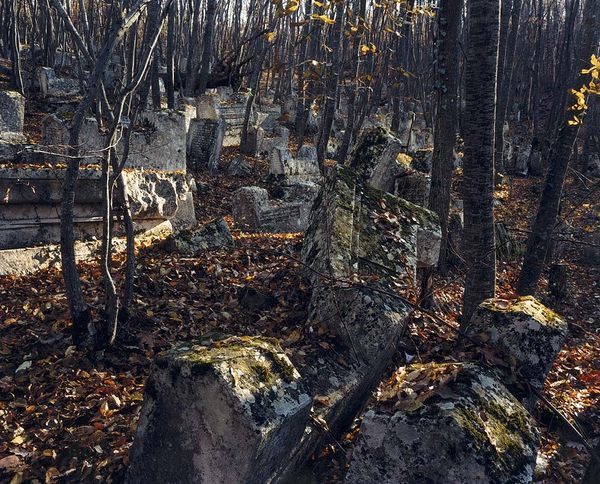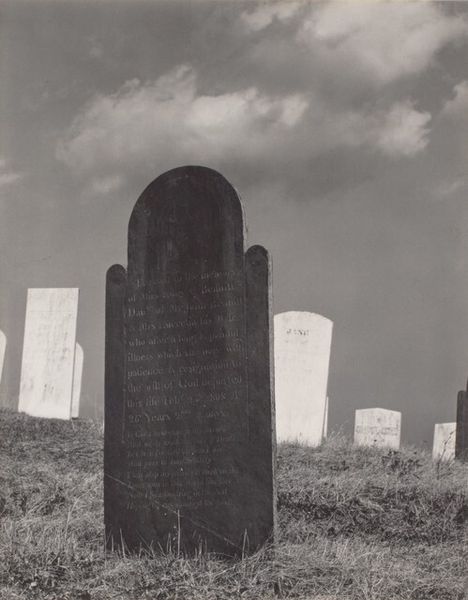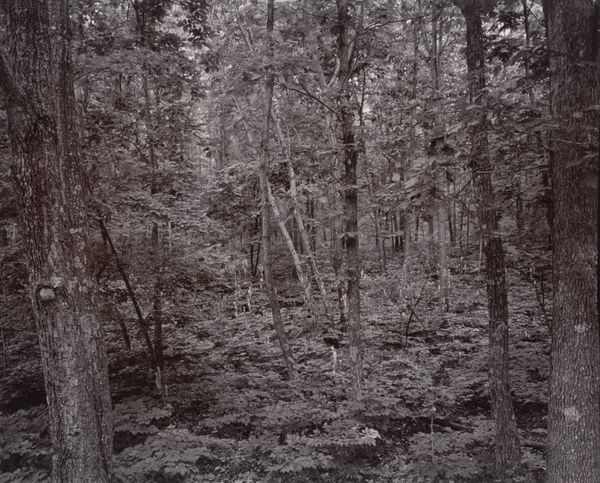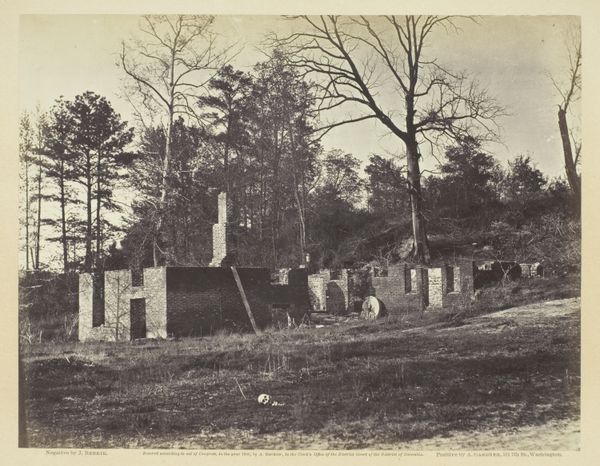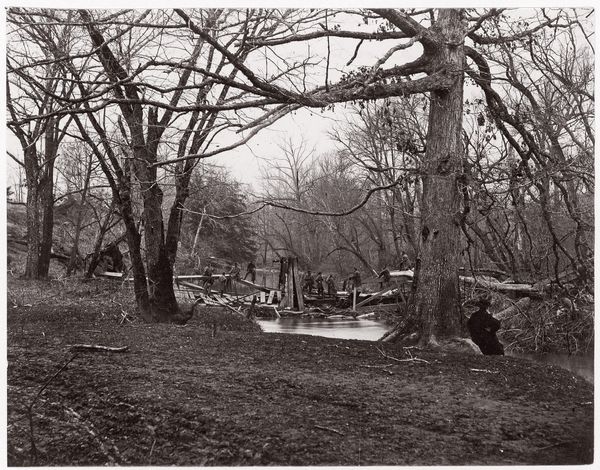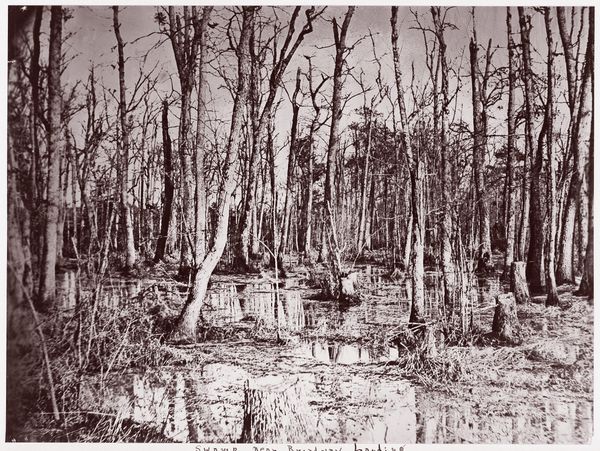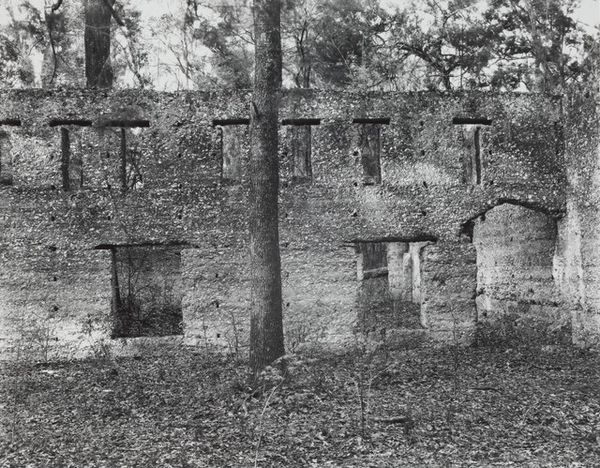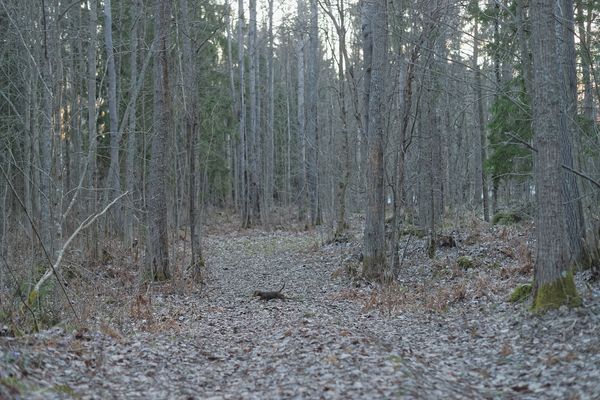
Copyright: Arsen Savadov,Fair Use
Editor: We’re looking at Arsen Savadov’s "Karaim Cemetery," a photograph from 2001. It has a distinctly melancholic atmosphere. What strikes me is the way nature is reclaiming this space. What do you see when you look at this piece? Curator: I see a powerful commentary on time, memory, and cultural preservation, viewed through a socio-political lens. Savadov presents us with more than just a decaying cemetery. Consider the Karaim people themselves—a small, often overlooked ethnic group. Editor: I didn’t know that. Curator: Their history, like the cemetery, risks fading from public consciousness. The ruin is not just physical. The placement of the tombstones amongst the trees suggests an intentional merging of history and nature, yet also implies a sense of abandonment. To whom does this cemetery belong, and who is responsible for its upkeep? These are relevant political questions when viewing this work. Editor: So you’re saying it's not just about decay, but about whose stories are preserved, and who gets to tell them? Curator: Precisely. Savadov prompts us to consider how institutions, or their absence, shape our understanding of cultural heritage. Look at how the light catches on some of the stones; even in ruin, there's a beauty and dignity that Savadov captures. What stories are etched on those stones, and who will remember them? The Karaim community may vanish with its last speakers and only the stones might testify about the community. Editor: I’m starting to see so many layers here. It's a hauntingly beautiful image, but also a potent statement about the politics of memory. Curator: Exactly. Art allows us to consider these intricate intersections between the personal, historical, and political. And sometimes reveals their dramatic destinies.
Comments
No comments
Be the first to comment and join the conversation on the ultimate creative platform.


